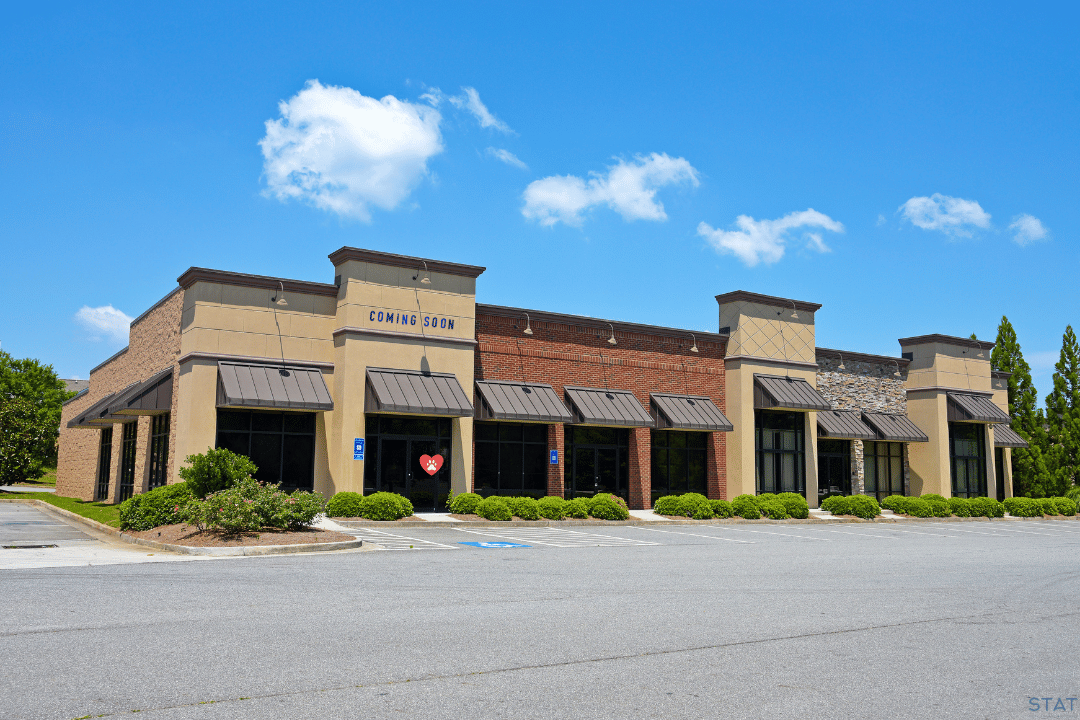🏥 From Startup to Second Location: How Growing Practices Find Their Next Texas Office
When Growth Becomes the Next Challenge
Adding a second location can be one of the biggest turning points in a medical practice’s life cycle. The first office proved your model works. The next one will test how well it scales.
For Texas physicians, expansion brings both opportunity and complexity. Picking the wrong market, misjudging space needs, or underestimating build-out timelines can turn a smart growth plan into an expensive distraction.
At STAT, we help healthcare groups across Texas expand strategically. Here’s what to consider before you sign for location number two.
Estimated reading time: 5 minutes
Know Why You’re Expanding
Before you start touring spaces, get clear on the “why.” Expansion should be driven by demand, not just ambition.
Ask yourself:
Are patients traveling from another area to reach you?
Is your existing office consistently at or near capacity?
Is a hospital partner or referral network requesting a presence in another market?
Growth should be sustainable, not reactionary. Understanding the data behind your patient volume and referral patterns helps you choose a location that supports, rather than cannibalizes, your main office.
STAT Tip: Track patient ZIP codes for six months before expanding. The data often reveals where your next office should be.
Choose the Right Market
Location strategy for healthcare is different from retail or office tenants. You’re not chasing foot traffic; you’re serving patients.
When evaluating where to open your second office, consider:
Population Growth: Look for expanding suburbs with family density and new home construction.
Competition: Map out existing providers within a 5–10 mile radius. Oversaturation can limit growth.
Proximity to Complimentary Services: Being near these or referral hubs can support steady patient flow.
Accessibility: Visibility is valuable, but access and parking usually matter more in healthcare.
For many physicians, suburban Texas cities such as New Braunfels, Frisco, Georgetown, or Boerne strike the right balance of cost, convenience, and population growth.
STAT Tip: Work backward from your patient demographics. If 20% of your base already lives in a neighboring suburb, that’s your first signal to investigate.
Plan Space with Future Growth in Mind
Your second location doesn’t have to be a clone of your first. Every community has different demographics, payer mixes, and referral patterns — so your space should be right-sized for local demand.
Start small, but plan for scalability. A 2,500–3,000 square foot office may be perfect to test a new market, as long as the lease allows room to expand into adjacent space later. Avoid overcommitting to square footage before your schedule and staff are ready to fill it.
Key questions to ask:
How many exam rooms will be needed to maintain efficiency?
Is the waiting area large enough for the projected volume?
Does the layout support future imaging, procedure, or specialty service additions?
STAT Tip: Ask your broker to identify suites with “expansion options” or adjacent vacancy. Securing that flexibility early can save you from a costly relocation later.
Make Sure Operations Can Support It
Growth isn’t just about real estate! It’s about people, process, and capital.
A second office doubles certain costs and management challenges, even if patient volume grows more slowly at first.
Before you sign a new lease, confirm that your operations can absorb:
Staffing: Can your existing team rotate between sites, or will you hire a new manager and front desk staff?
Systems: Are your scheduling, billing, and EHR systems set up to support multiple locations seamlessly?
Culture: How will you maintain consistency in patient experience and practice values across both sites?
STAT Tip: Open your second office as an “extension,” not an independent entity, until it proves steady. Shared staff, branding, and systems reduce costs and confusion early on.
Get the Timing and Lease Structure Right
The biggest mistake we see with expanding practices is signing too soon or structuring the lease too rigidly.
Your second location should strengthen your business, not strain it.
Watch for these common timing traps:
Lease Overlap: Don’t start paying full rent months before you’re ready to open. Negotiate a rent-free build-out period so you’re not covering two full leases while finishing construction.
Short-Term Flexibility: For test-market locations, consider an initial three- to five-year lease with renewal options. This lets you grow or pivot as the new site proves itself.
Expansion Rights: If the building has multiple suites, secure a clause giving your practice first right of refusal on adjacent space.
Ownership Evaluation: Once your second site stabilizes, it may make sense to buy your next property instead of leasing.
STAT Tip: Growth is only smart if it’s sustainable. Model your cash flow with realistic patient ramp-up numbers, not best-case scenarios.
The STAT Perspective
Adding a second location is an exciting milestone, but it’s also one of the most complex moves a practice can make.
At STAT, we specialize in helping healthcare groups across Texas grow with intention — choosing markets, spaces, and lease terms that support long-term success.
Because landlords typically cover brokerage fees, our advisory services come at no direct cost to you.
Whether you’re testing a new market or planning a permanent expansion, we can help you evaluate timing, negotiate terms, and align your real estate with your vision of care.
Ready to explore your next location? Contact STAT to start the conversation.





